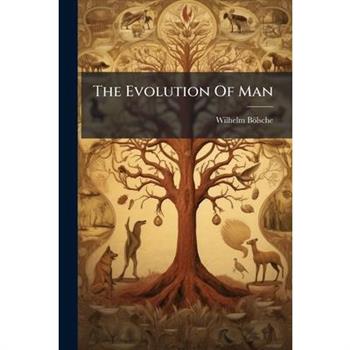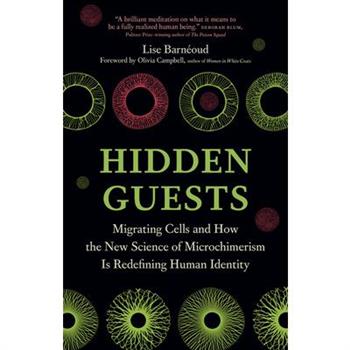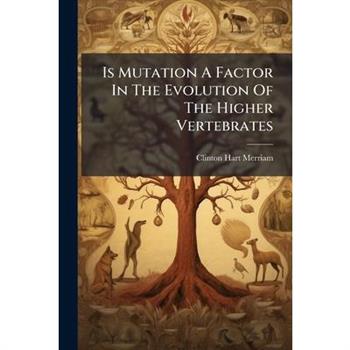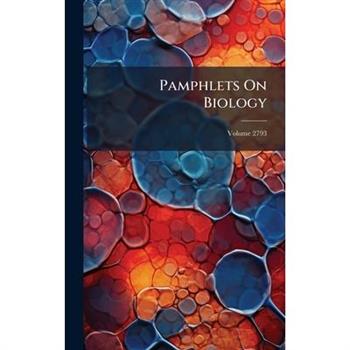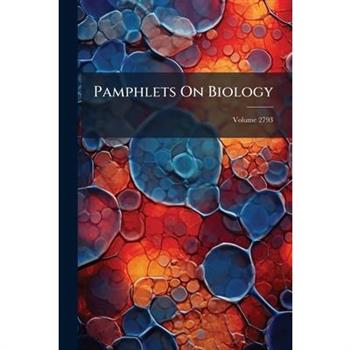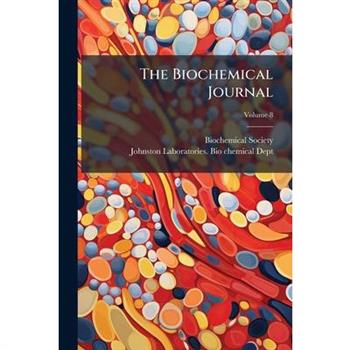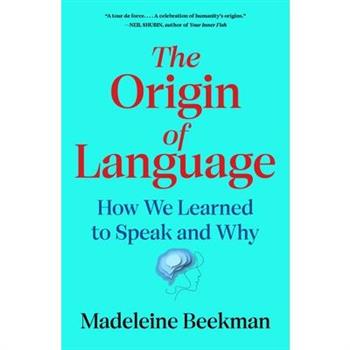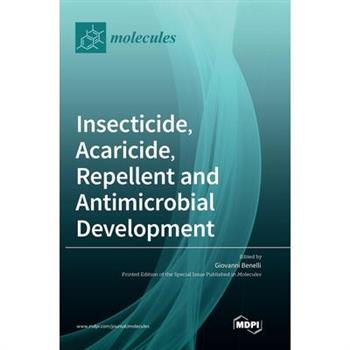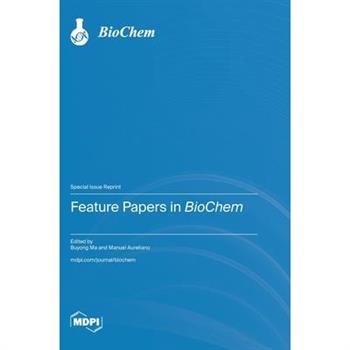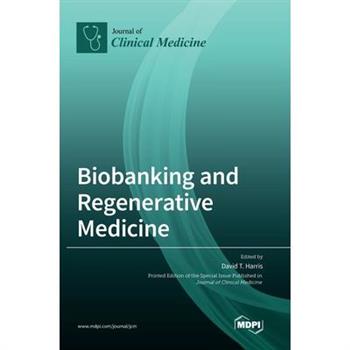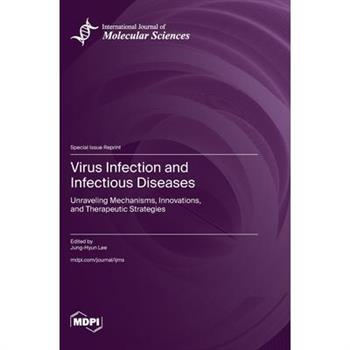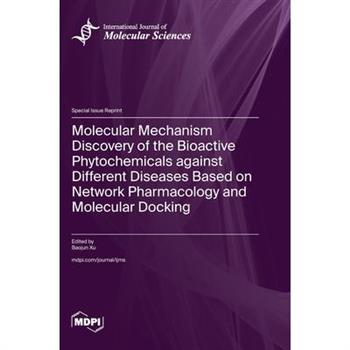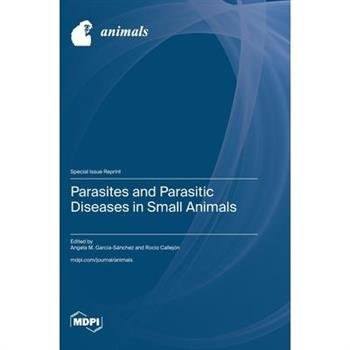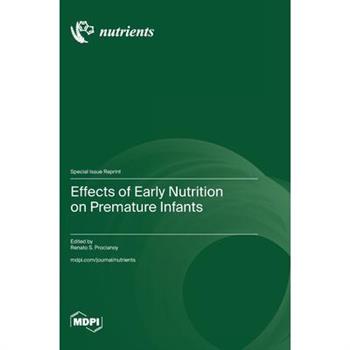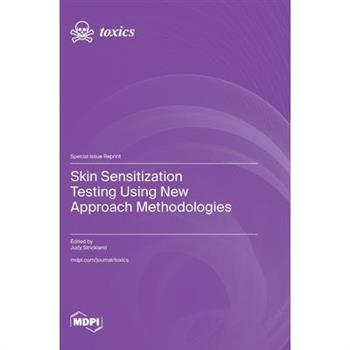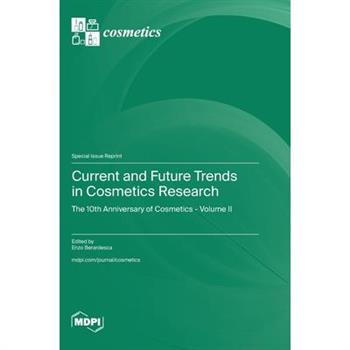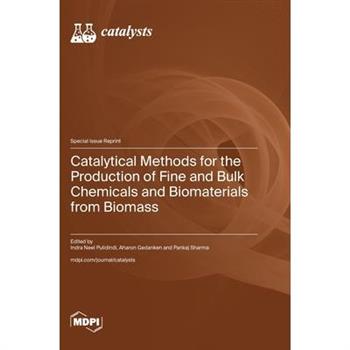Green Biorefinery Solutions
This book delves into the innovative concept of biorefineries as a sustainable approach for managing biodegradable waste and producing valuable resources. It highlights the pressing need to address environmental challenges, such as waste accumulation and resource depletion while meeting the increasing demand for renewable energy and bio-based products. The book introduces the concept of biorefineries, which are analogous to conventional oil refineries but focus on converting biomass and biodegradable waste into a range of high-value products. These products include biofuels, biochemicals, bioplastics, biofertilizers, and other materials that can replace fossil-derived equivalents. The author explores various technological pathways and processes involved in efficiently transforming different types of biodegradable waste, such as agricultural residues, food waste, and organic byproducts, into usable resources. Readers are guided through the principles of biorefinery design, integration of various unit operations, and the optimization of conversion processes to achieve maximum resource utilization and minimal environmental impact. The book emphasizes the importance of circular economy concepts, where waste is considered a valuable input rather than a burden. It also discusses the economic, social, and environmental benefits of adopting biorefinery solutions in different sectors, from agriculture to industry. The book is a valuable resource for researchers, policymakers, industry professionals, and students interested in exploring innovative approaches to waste management, resource recovery, and the transition towards a more sustainable and circular bioeconomy. By highlighting the transformative potential of biorefineries, the book contributes to the ongoing dialogue on creating a more environmentally conscious and resource-efficient future.
The Mutation Factor In Evolution
"The Mutation Factor In Evolution: With Particular Reference To Oenothera" explores the role of mutation in the evolutionary process. Written by Reginald Ruggles Gates, this work delves into the genetic mechanisms driving evolutionary change, focusing specifically on the plant genus Oenothera as a model for understanding mutation. The book likely examines the history of evolutionary theory, principles of genetics, and the specific mutations observed in Oenothera, offering insights into the broader implications for evolutionary biology. It is valuable for students, researchers, and anyone interested in the intersection of genetics and evolution.This work has been selected by scholars as being culturally important, and is part of the knowledge base of civilization as we know it. This work was reproduced from the original artifact, and remains as true to the original work as possible. Therefore, you will see the original copyright references, library stamps (as most of these works have been housed in our most important libraries around the world), and other notations in the work.This work is in the public domain in the United States of America, and possibly other nations. Within the United States, you may freely copy and distribute this work, as no entity (individual or corporate) has a copyright on the body of the work.As a reproduction of a historical artifact, this work may contain missing or blurred pages, poor pictures, errant marks, etc. Scholars believe, and we concur, that this work is important enough to be preserved, reproduced, and made generally available to the public. We appreciate your support of the preservation process, and thank you for being an important part of keeping this knowledge alive and relevant.
The Evolution Of Man
Explore the fascinating subject of evolution with "The Evolution Of Man" by Wilhelm B繹lsche. Delving into the core principles of natural selection and adaptation, this insightful work provides a comprehensive overview of evolutionary theory. B繹lsche's exploration of the development of life forms offers readers a deeper understanding of our place in the natural world. This book remains an important contribution to the field, and will enlighten anyone interested in the history of evolutionary thought.This work has been selected by scholars as being culturally important, and is part of the knowledge base of civilization as we know it. This work was reproduced from the original artifact, and remains as true to the original work as possible. Therefore, you will see the original copyright references, library stamps (as most of these works have been housed in our most important libraries around the world), and other notations in the work.This work is in the public domain in the United States of America, and possibly other nations. Within the United States, you may freely copy and distribute this work, as no entity (individual or corporate) has a copyright on the body of the work.As a reproduction of a historical artifact, this work may contain missing or blurred pages, poor pictures, errant marks, etc. Scholars believe, and we concur, that this work is important enough to be preserved, reproduced, and made generally available to the public. We appreciate your support of the preservation process, and thank you for being an important part of keeping this knowledge alive and relevant.
The Evolution Of Man
Explore the fascinating subject of evolution with "The Evolution Of Man" by Wilhelm B繹lsche. Delving into the core principles of natural selection and adaptation, this insightful work provides a comprehensive overview of evolutionary theory. B繹lsche's exploration of the development of life forms offers readers a deeper understanding of our place in the natural world. This book remains an important contribution to the field, and will enlighten anyone interested in the history of evolutionary thought.This work has been selected by scholars as being culturally important, and is part of the knowledge base of civilization as we know it. This work was reproduced from the original artifact, and remains as true to the original work as possible. Therefore, you will see the original copyright references, library stamps (as most of these works have been housed in our most important libraries around the world), and other notations in the work.This work is in the public domain in the United States of America, and possibly other nations. Within the United States, you may freely copy and distribute this work, as no entity (individual or corporate) has a copyright on the body of the work.As a reproduction of a historical artifact, this work may contain missing or blurred pages, poor pictures, errant marks, etc. Scholars believe, and we concur, that this work is important enough to be preserved, reproduced, and made generally available to the public. We appreciate your support of the preservation process, and thank you for being an important part of keeping this knowledge alive and relevant.
Importance Of The Mutation Theory In Practical Breeding
"Importance Of The Mutation Theory In Practical Breeding" explores the application of mutation theory to enhance agricultural practices. Written by George Harrison Shull, this work delves into the genetic principles underlying mutation and their practical implications for plant breeding. The book examines how understanding mutation can lead to the development of new and improved crop varieties, offering insights into increasing yields, enhancing disease resistance, and adapting crops to changing environmental conditions. It bridges the gap between theoretical genetics and real-world agricultural applications, making it a valuable resource for researchers, breeders, and students in the field.This work has been selected by scholars as being culturally important, and is part of the knowledge base of civilization as we know it. This work was reproduced from the original artifact, and remains as true to the original work as possible. Therefore, you will see the original copyright references, library stamps (as most of these works have been housed in our most important libraries around the world), and other notations in the work.This work is in the public domain in the United States of America, and possibly other nations. Within the United States, you may freely copy and distribute this work, as no entity (individual or corporate) has a copyright on the body of the work.As a reproduction of a historical artifact, this work may contain missing or blurred pages, poor pictures, errant marks, etc. Scholars believe, and we concur, that this work is important enough to be preserved, reproduced, and made generally available to the public. We appreciate your support of the preservation process, and thank you for being an important part of keeping this knowledge alive and relevant.
Is Mutation A Factor In The Evolution Of The Higher Vertebrates
"Is Mutation A Factor In The Evolution Of The Higher Vertebrates" explores the role of mutation in the evolutionary development of higher vertebrate species. Clinton Hart Merriam delves into the scientific understanding of how mutations, or genetic changes, contribute to the adaptation and diversification of these complex organisms. This work examines the interplay between mutation and natural selection, shedding light on the mechanisms driving evolutionary processes in the animal kingdom.Merriam's insights offer valuable contributions to the field of evolutionary biology. This book provides a historical perspective on the scientific discourse surrounding evolution and genetics, appealing to biologists, zoologists, and anyone interested in the fundamental processes shaping life on Earth.This work has been selected by scholars as being culturally important, and is part of the knowledge base of civilization as we know it. This work was reproduced from the original artifact, and remains as true to the original work as possible. Therefore, you will see the original copyright references, library stamps (as most of these works have been housed in our most important libraries around the world), and other notations in the work.This work is in the public domain in the United States of America, and possibly other nations. Within the United States, you may freely copy and distribute this work, as no entity (individual or corporate) has a copyright on the body of the work.As a reproduction of a historical artifact, this work may contain missing or blurred pages, poor pictures, errant marks, etc. Scholars believe, and we concur, that this work is important enough to be preserved, reproduced, and made generally available to the public. We appreciate your support of the preservation process, and thank you for being an important part of keeping this knowledge alive and relevant.
On Force And Matter In Relation To Organization
"On Force And Matter In Relation To Organization: An Introductory Lecture To A Course On Physiology" presents Arthur Gamgee's perspective on the fundamental relationship between force, matter, and living organisms. Gamgee, a prominent physiologist, delivers an insightful discourse on the nature of life and the physical and chemical processes that underpin it. This lecture offers a valuable glimpse into the scientific thought of the late 19th century, addressing the vitalistic and mechanistic viewpoints prevalent at the time. Gamgee's work provides historical context for understanding the development of physiology and its connections to broader scientific and philosophical debates. It remains relevant for scholars interested in the history of science, the philosophy of biology, and the evolution of ideas about the nature of life.This work has been selected by scholars as being culturally important, and is part of the knowledge base of civilization as we know it. This work was reproduced from the original artifact, and remains as true to the original work as possible. Therefore, you will see the original copyright references, library stamps (as most of these works have been housed in our most important libraries around the world), and other notations in the work.This work is in the public domain in the United States of America, and possibly other nations. Within the United States, you may freely copy and distribute this work, as no entity (individual or corporate) has a copyright on the body of the work.As a reproduction of a historical artifact, this work may contain missing or blurred pages, poor pictures, errant marks, etc. Scholars believe, and we concur, that this work is important enough to be preserved, reproduced, and made generally available to the public. We appreciate your support of the preservation process, and thank you for being an important part of keeping this knowledge alive and relevant.
Is Mutation A Factor In The Evolution Of The Higher Vertebrates
"Is Mutation A Factor In The Evolution Of The Higher Vertebrates" explores the role of mutation in the evolutionary development of higher vertebrate species. Clinton Hart Merriam delves into the scientific understanding of how mutations, or genetic changes, contribute to the adaptation and diversification of these complex organisms. This work examines the interplay between mutation and natural selection, shedding light on the mechanisms driving evolutionary processes in the animal kingdom.Merriam's insights offer valuable contributions to the field of evolutionary biology. This book provides a historical perspective on the scientific discourse surrounding evolution and genetics, appealing to biologists, zoologists, and anyone interested in the fundamental processes shaping life on Earth.This work has been selected by scholars as being culturally important, and is part of the knowledge base of civilization as we know it. This work was reproduced from the original artifact, and remains as true to the original work as possible. Therefore, you will see the original copyright references, library stamps (as most of these works have been housed in our most important libraries around the world), and other notations in the work.This work is in the public domain in the United States of America, and possibly other nations. Within the United States, you may freely copy and distribute this work, as no entity (individual or corporate) has a copyright on the body of the work.As a reproduction of a historical artifact, this work may contain missing or blurred pages, poor pictures, errant marks, etc. Scholars believe, and we concur, that this work is important enough to be preserved, reproduced, and made generally available to the public. We appreciate your support of the preservation process, and thank you for being an important part of keeping this knowledge alive and relevant.
Phycologia Britannica
Phycologia Britannica, Volume 2, by William Henry Harvey, is a comprehensive historical survey of British seaweeds. This meticulously detailed work, originally published in the mid-19th century, provides an in-depth look at the various species of algae found along the British coastline. Harvey's detailed descriptions, accompanied by precise illustrations, make this volume an invaluable resource for botanists, marine biologists, and historians of science. Volume 2 delves into the classification, morphology, and distribution of numerous seaweed species, offering insights into the Victorian era's understanding of marine life. This book remains a significant reference for those studying the historical context of phycology and the natural history of the British Isles.This work has been selected by scholars as being culturally important, and is part of the knowledge base of civilization as we know it. This work was reproduced from the original artifact, and remains as true to the original work as possible. Therefore, you will see the original copyright references, library stamps (as most of these works have been housed in our most important libraries around the world), and other notations in the work.This work is in the public domain in the United States of America, and possibly other nations. Within the United States, you may freely copy and distribute this work, as no entity (individual or corporate) has a copyright on the body of the work.As a reproduction of a historical artifact, this work may contain missing or blurred pages, poor pictures, errant marks, etc. Scholars believe, and we concur, that this work is important enough to be preserved, reproduced, and made generally available to the public. We appreciate your support of the preservation process, and thank you for being an important part of keeping this knowledge alive and relevant.
Macromolecular Complexes
A foundational work on macromolecular complexes, this volume presents the proceedings of a symposium held by the Society of General Physiologists. Edited by David F. Waugh and Mac V. Edds, the collection explores the structure, function, and interactions of large biological molecules. Topics covered range from the physical chemistry of proteins to the organization of subcellular components. This early work provides insights into the emerging field of molecular biology and the understanding of complex biological systems. This work has been selected by scholars as being culturally important, and is part of the knowledge base of civilization as we know it. This work was reproduced from the original artifact, and remains as true to the original work as possible. Therefore, you will see the original copyright references, library stamps (as most of these works have been housed in our most important libraries around the world), and other notations in the work.This work is in the public domain in the United States of America, and possibly other nations. Within the United States, you may freely copy and distribute this work, as no entity (individual or corporate) has a copyright on the body of the work.As a reproduction of a historical artifact, this work may contain missing or blurred pages, poor pictures, errant marks, etc. Scholars believe, and we concur, that this work is important enough to be preserved, reproduced, and made generally available to the public. We appreciate your support of the preservation process, and thank you for being an important part of keeping this knowledge alive and relevant.
Pamphlets On Biology
Pamphlets On Biology, Kofoid Collection, Volume 2793 is a compilation of essays exploring various aspects of biology. This volume, part of the esteemed Kofoid Collection, offers a glimpse into the historical study of life sciences. The anonymous authorship suggests a collective effort or a compilation of works from various contributors, making it a valuable resource for understanding the development of biological thought. Readers interested in the history of science, particularly biology, will find this collection insightful. The essays provide a snapshot of the scientific discussions and discoveries of their time, offering context to modern biological understanding. This volume serves as a significant contribution to the historical record of scientific inquiry.This work has been selected by scholars as being culturally important, and is part of the knowledge base of civilization as we know it. This work was reproduced from the original artifact, and remains as true to the original work as possible. Therefore, you will see the original copyright references, library stamps (as most of these works have been housed in our most important libraries around the world), and other notations in the work.This work is in the public domain in the United States of America, and possibly other nations. Within the United States, you may freely copy and distribute this work, as no entity (individual or corporate) has a copyright on the body of the work.As a reproduction of a historical artifact, this work may contain missing or blurred pages, poor pictures, errant marks, etc. Scholars believe, and we concur, that this work is important enough to be preserved, reproduced, and made generally available to the public. We appreciate your support of the preservation process, and thank you for being an important part of keeping this knowledge alive and relevant.
Pamphlets On Biology
Pamphlets On Biology, Kofoid Collection, Volume 2793 is a compilation of essays exploring various aspects of biology. This volume, part of the esteemed Kofoid Collection, offers a glimpse into the historical study of life sciences. The anonymous authorship suggests a collective effort or a compilation of works from various contributors, making it a valuable resource for understanding the development of biological thought. Readers interested in the history of science, particularly biology, will find this collection insightful. The essays provide a snapshot of the scientific discussions and discoveries of their time, offering context to modern biological understanding. This volume serves as a significant contribution to the historical record of scientific inquiry.This work has been selected by scholars as being culturally important, and is part of the knowledge base of civilization as we know it. This work was reproduced from the original artifact, and remains as true to the original work as possible. Therefore, you will see the original copyright references, library stamps (as most of these works have been housed in our most important libraries around the world), and other notations in the work.This work is in the public domain in the United States of America, and possibly other nations. Within the United States, you may freely copy and distribute this work, as no entity (individual or corporate) has a copyright on the body of the work.As a reproduction of a historical artifact, this work may contain missing or blurred pages, poor pictures, errant marks, etc. Scholars believe, and we concur, that this work is important enough to be preserved, reproduced, and made generally available to the public. We appreciate your support of the preservation process, and thank you for being an important part of keeping this knowledge alive and relevant.
Histological TechniqueA Guide For Use In A Laboratory Course In Histology
"Histological Technique: A Guide For Use In A Laboratory Course In Histology" is a detailed manual designed for students and researchers in the field of histology. Authored by B. F. Kingsbury and O. A. Johannsen, this guide provides comprehensive instructions on the preparation and examination of tissue samples. Focusing on practical application, the book covers a range of essential techniques, including fixation, sectioning, staining, and mounting. Originally published in 1934, this text reflects the methods and understanding of histology prevalent at the time, offering valuable insights into the historical development of histological practices. While modern techniques have evolved, this book remains a useful resource for understanding the foundational principles of histology and the preparation of specimens for microscopic examination. It is particularly valuable for those interested in the history of science and the evolution of laboratory techniques in biological and medical research.This work has been selected by scholars as being culturally important, and is part of the knowledge base of civilization as we know it. This work was reproduced from the original artifact, and remains as true to the original work as possible. Therefore, you will see the original copyright references, library stamps (as most of these works have been housed in our most important libraries around the world), and other notations in the work.This work is in the public domain in the United States of America, and possibly other nations. Within the United States, you may freely copy and distribute this work, as no entity (individual or corporate) has a copyright on the body of the work.As a reproduction of a historical artifact, this work may contain missing or blurred pages, poor pictures, errant marks, etc. Scholars believe, and we concur, that this work is important enough to be preserved, reproduced, and made generally available to the public. We appreciate your support of the preservation process, and thank you for being an important part of keeping this knowledge alive and relevant.
Molecular & General Genetics
"Molecular & General Genetics: MGG, 23" offers a comprehensive overview of fundamental concepts in genetics and molecular biology. This volume explores a range of topics crucial to understanding the intricacies of genetic mechanisms and their applications. Aimed at researchers, students, and professionals in the life sciences, the book provides detailed insights into molecular genetics, genomics, and related fields. It serves as an invaluable resource for staying abreast of advancements and foundational knowledge in these rapidly evolving scientific disciplines. This book is an essential addition to any scientific library, offering a wealth of information in the field of molecular and general genetics.This work has been selected by scholars as being culturally important, and is part of the knowledge base of civilization as we know it. This work was reproduced from the original artifact, and remains as true to the original work as possible. Therefore, you will see the original copyright references, library stamps (as most of these works have been housed in our most important libraries around the world), and other notations in the work.This work is in the public domain in the United States of America, and possibly other nations. Within the United States, you may freely copy and distribute this work, as no entity (individual or corporate) has a copyright on the body of the work.As a reproduction of a historical artifact, this work may contain missing or blurred pages, poor pictures, errant marks, etc. Scholars believe, and we concur, that this work is important enough to be preserved, reproduced, and made generally available to the public. We appreciate your support of the preservation process, and thank you for being an important part of keeping this knowledge alive and relevant.
Body-build and its Inheritance
"Body-build and its Inheritance" (1923) by Charles Benedict Davenport explores the scientific understanding of human physical variation and its genetic basis in the early 20th century. Davenport, a prominent biologist and eugenicist, examines the inheritance of body types and physical characteristics. This work reflects the scientific trends and perspectives of its time, offering insights into the study of human anatomy, genetics, and heredity. While some of the ideas presented are now considered outdated or controversial, the book remains a valuable historical document, illustrating the development of scientific thought on human diversity and inheritance.This work has been selected by scholars as being culturally important, and is part of the knowledge base of civilization as we know it. This work was reproduced from the original artifact, and remains as true to the original work as possible. Therefore, you will see the original copyright references, library stamps (as most of these works have been housed in our most important libraries around the world), and other notations in the work.This work is in the public domain in the United States of America, and possibly other nations. Within the United States, you may freely copy and distribute this work, as no entity (individual or corporate) has a copyright on the body of the work.As a reproduction of a historical artifact, this work may contain missing or blurred pages, poor pictures, errant marks, etc. Scholars believe, and we concur, that this work is important enough to be preserved, reproduced, and made generally available to the public. We appreciate your support of the preservation process, and thank you for being an important part of keeping this knowledge alive and relevant.
The Biochemical Journal
The Biochemical Journal, Volume 8, presents a compilation of groundbreaking research in the field of biochemistry from 1914. Published by the Biochemical Society (Great Britain) and the Bio-chemical Department of Johnston Laboratories, this volume offers a fascinating glimpse into the scientific inquiries of the early 20th century. This historical record is invaluable for researchers, historians of science, and anyone interested in the development of biochemical knowledge. Explore the original findings and methodologies that shaped our understanding of the fundamental processes of life. This vintage journal captures a pivotal era in scientific discovery and remains a testament to the enduring quest for knowledge.This work has been selected by scholars as being culturally important, and is part of the knowledge base of civilization as we know it. This work was reproduced from the original artifact, and remains as true to the original work as possible. Therefore, you will see the original copyright references, library stamps (as most of these works have been housed in our most important libraries around the world), and other notations in the work.This work is in the public domain in the United States of America, and possibly other nations. Within the United States, you may freely copy and distribute this work, as no entity (individual or corporate) has a copyright on the body of the work.As a reproduction of a historical artifact, this work may contain missing or blurred pages, poor pictures, errant marks, etc. Scholars believe, and we concur, that this work is important enough to be preserved, reproduced, and made generally available to the public. We appreciate your support of the preservation process, and thank you for being an important part of keeping this knowledge alive and relevant.
Haemoglobin; a Symposium Based on a Conference Held at Cambridge in June 1948 in Memory of Sir Joseph Barcroft
"Haemoglobin; a Symposium Based on a Conference Held at Cambridge in June 1948 in Memory of Sir Joseph Barcroft" presents a comprehensive exploration of hemoglobin, the vital protein responsible for oxygen transport in the blood. Compiled from the proceedings of a conference held in Cambridge, this volume features contributions from leading scientists and researchers of the era. The book delves into the biochemical properties, physiological functions, and clinical significance of hemoglobin. It offers insights into the structure and behavior of hemoglobin under various conditions. This symposium serves as a historical record of the state of knowledge on hemoglobin at a pivotal time in the development of modern biochemistry and molecular biology, honoring the legacy of Sir Joseph Barcroft's pioneering work in respiratory physiology.This work has been selected by scholars as being culturally important, and is part of the knowledge base of civilization as we know it. This work was reproduced from the original artifact, and remains as true to the original work as possible. Therefore, you will see the original copyright references, library stamps (as most of these works have been housed in our most important libraries around the world), and other notations in the work.This work is in the public domain in the United States of America, and possibly other nations. Within the United States, you may freely copy and distribute this work, as no entity (individual or corporate) has a copyright on the body of the work.As a reproduction of a historical artifact, this work may contain missing or blurred pages, poor pictures, errant marks, etc. Scholars believe, and we concur, that this work is important enough to be preserved, reproduced, and made generally available to the public. We appreciate your support of the preservation process, and thank you for being an important part of keeping this knowledge alive and relevant.
The Biochemical Journal
The Biochemical Journal, Volume 8, presents a compilation of groundbreaking research in the field of biochemistry from 1914. Published by the Biochemical Society (Great Britain) and the Bio-chemical Department of Johnston Laboratories, this volume offers a fascinating glimpse into the scientific inquiries of the early 20th century. This historical record is invaluable for researchers, historians of science, and anyone interested in the development of biochemical knowledge. Explore the original findings and methodologies that shaped our understanding of the fundamental processes of life. This vintage journal captures a pivotal era in scientific discovery and remains a testament to the enduring quest for knowledge.This work has been selected by scholars as being culturally important, and is part of the knowledge base of civilization as we know it. This work was reproduced from the original artifact, and remains as true to the original work as possible. Therefore, you will see the original copyright references, library stamps (as most of these works have been housed in our most important libraries around the world), and other notations in the work.This work is in the public domain in the United States of America, and possibly other nations. Within the United States, you may freely copy and distribute this work, as no entity (individual or corporate) has a copyright on the body of the work.As a reproduction of a historical artifact, this work may contain missing or blurred pages, poor pictures, errant marks, etc. Scholars believe, and we concur, that this work is important enough to be preserved, reproduced, and made generally available to the public. We appreciate your support of the preservation process, and thank you for being an important part of keeping this knowledge alive and relevant.
The Science and Philosophy of the Organism
"The Science and Philosophy of the Organism" presents Hans Driesch's Gifford Lectures delivered at Aberdeen University in 1907-1908. Driesch, a prominent biologist and philosopher, explores his theory of vitalism, challenging mechanistic explanations of life processes. Focusing on morphogenesis and the development of organisms, Driesch argues for the existence of non-material factors that guide biological development.These lectures delve into the philosophical implications of biological research, examining the limitations of purely physical and chemical explanations. This work remains a significant contribution to the philosophy of science, offering insights into the enduring debate between vitalism and mechanism in understanding the nature of life.This work has been selected by scholars as being culturally important, and is part of the knowledge base of civilization as we know it. This work was reproduced from the original artifact, and remains as true to the original work as possible. Therefore, you will see the original copyright references, library stamps (as most of these works have been housed in our most important libraries around the world), and other notations in the work.This work is in the public domain in the United States of America, and possibly other nations. Within the United States, you may freely copy and distribute this work, as no entity (individual or corporate) has a copyright on the body of the work.As a reproduction of a historical artifact, this work may contain missing or blurred pages, poor pictures, errant marks, etc. Scholars believe, and we concur, that this work is important enough to be preserved, reproduced, and made generally available to the public. We appreciate your support of the preservation process, and thank you for being an important part of keeping this knowledge alive and relevant.
Microbes and You
Microbes and You, by Stanley E. Wedberg, provides an accessible introduction to the world of microorganisms and their impact on human life. This book explores the fundamental principles of microbiology, covering topics such as bacteria, viruses, and other microbes. It emphasizes the importance of understanding microbes in relation to health, disease, and the environment. Originally published in 1953, this book offers a historical perspective on the field of microbiology. It discusses how microbes affect various aspects of daily life, from food production to public health. Wedberg's clear and engaging writing style makes complex scientific concepts understandable for general readers. Microbes and You remains relevant for anyone interested in learning about the microscopic world and its far-reaching implications. It serves as a valuable resource for students, educators, and anyone curious about the science of microbiology.This work has been selected by scholars as being culturally important, and is part of the knowledge base of civilization as we know it. This work was reproduced from the original artifact, and remains as true to the original work as possible. Therefore, you will see the original copyright references, library stamps (as most of these works have been housed in our most important libraries around the world), and other notations in the work.This work is in the public domain in the United States of America, and possibly other nations. Within the United States, you may freely copy and distribute this work, as no entity (individual or corporate) has a copyright on the body of the work.As a reproduction of a historical artifact, this work may contain missing or blurred pages, poor pictures, errant marks, etc. Scholars believe, and we concur, that this work is important enough to be preserved, reproduced, and made generally available to the public. We appreciate your support of the preservation process, and thank you for being an important part of keeping this knowledge alive and relevant.
The Nautilus
"The Nautilus" (33-34), published by the American Malacological Union, explores the fascinating world of mollusks and marine life. This volume offers insights into the study of shells and their natural history. A valuable resource for both amateur enthusiasts and professional researchers, "The Nautilus" provides a detailed look at the diverse species within this biological class. It is an essential addition to any collection focusing on marine biology and natural history.This work has been selected by scholars as being culturally important, and is part of the knowledge base of civilization as we know it. This work was reproduced from the original artifact, and remains as true to the original work as possible. Therefore, you will see the original copyright references, library stamps (as most of these works have been housed in our most important libraries around the world), and other notations in the work.This work is in the public domain in the United States of America, and possibly other nations. Within the United States, you may freely copy and distribute this work, as no entity (individual or corporate) has a copyright on the body of the work.As a reproduction of a historical artifact, this work may contain missing or blurred pages, poor pictures, errant marks, etc. Scholars believe, and we concur, that this work is important enough to be preserved, reproduced, and made generally available to the public. We appreciate your support of the preservation process, and thank you for being an important part of keeping this knowledge alive and relevant.
Is Evolution ProvedA Debate Between Douglas Dewar
Explore the intricate and enduring debate surrounding the theory of evolution in "Is Evolution Proved: A Debate Between Douglas Dewar." This book delves into a historical discussion of evolutionary science, exploring arguments for and against the central tenets of Darwinism. H.S. Shelton presents a comprehensive examination of the scientific evidence and philosophical implications that shaped the understanding of evolution in the mid-20th century.This work offers readers a unique opportunity to engage with the historical context of scientific debates and to understand the complexities of reconciling scientific theories with broader worldviews. A valuable resource for anyone interested in the history of science, the philosophy of biology, and the ongoing dialogue between science and religion.This work has been selected by scholars as being culturally important, and is part of the knowledge base of civilization as we know it. This work was reproduced from the original artifact, and remains as true to the original work as possible. Therefore, you will see the original copyright references, library stamps (as most of these works have been housed in our most important libraries around the world), and other notations in the work.This work is in the public domain in the United States of America, and possibly other nations. Within the United States, you may freely copy and distribute this work, as no entity (individual or corporate) has a copyright on the body of the work.As a reproduction of a historical artifact, this work may contain missing or blurred pages, poor pictures, errant marks, etc. Scholars believe, and we concur, that this work is important enough to be preserved, reproduced, and made generally available to the public. We appreciate your support of the preservation process, and thank you for being an important part of keeping this knowledge alive and relevant.
The Origin of Language
In a radical new story about the birth of our species, The Origin of Language argues that it was not hunting, fighting, or tool-making that forced early humans to speak, but the inescapable need to care for our children. Journeying to the dawn of Homo sapiens, evolutionary biologist Madeleine Beekman reveals the "happy accidents" hidden in our molecular biology--DNA, chromosomes, and proteins--that led to one of the most fateful events in the history of life on Earth: our giving birth to babies earlier in their development than our hominid cousins the Neanderthals and Denisovans. Faced with highly dependent infants requiring years of nurturing and protection, early human communities needed to cooperate and coordinate, and it was this unprecedented need for communication that triggered the creation of human language--and changed everything. Infused with cutting-edge science, sharp humor, and insights into the history of biology and its luminaries, Beekman weaves a narrative that's both enlightening and entertaining. Challenging the traditional theories of male luminaries like Chomksy, Pinker, and Harari, she invites us into the intricate world of molecular biology and its ancient secrets. The Origin of Language is a tour de force by a brilliant biologist on how a culture of cooperation and care have shaped our existence.
Sex in Microorganisms; a Symposium Presented on December 30, 1951, at the Philadelphia Meeting of the American Association for the Advancement of Science
"Sex in Microorganisms" presents the proceedings of a symposium held on December 30, 1951, at the Philadelphia meeting of the American Association for the Advancement of Science. This collection of papers explores the then-current understanding of sexual processes in microorganisms. Featuring contributions from leading scientists of the time, the book offers insights into early research in microbial genetics and cell biology. While the field has advanced significantly since its original publication, this volume remains a valuable historical resource for those interested in the development of microbiology and the study of genetic exchange in simple organisms. It provides a fascinating glimpse into the scientific questions and methodologies that shaped our current knowledge.This work has been selected by scholars as being culturally important, and is part of the knowledge base of civilization as we know it. This work was reproduced from the original artifact, and remains as true to the original work as possible. Therefore, you will see the original copyright references, library stamps (as most of these works have been housed in our most important libraries around the world), and other notations in the work.This work is in the public domain in the United States of America, and possibly other nations. Within the United States, you may freely copy and distribute this work, as no entity (individual or corporate) has a copyright on the body of the work.As a reproduction of a historical artifact, this work may contain missing or blurred pages, poor pictures, errant marks, etc. Scholars believe, and we concur, that this work is important enough to be preserved, reproduced, and made generally available to the public. We appreciate your support of the preservation process, and thank you for being an important part of keeping this knowledge alive and relevant.
The Origin and Nature of Life
"The Origin and Nature of Life" by Benjamin Moore explores the scientific understanding of life's beginnings and its fundamental characteristics. Originally published in the early 20th century, this work delves into the biological and chemical processes that underpin living organisms, offering insights into the prevailing scientific thought of the time. Moore examines the distinction between living and non-living matter, considering the role of energy, environment, and complex molecular structures. This book provides a valuable historical perspective on the study of life, reflecting early attempts to unravel the mysteries of existence. It will appeal to readers interested in the history of science, biology, and the ongoing quest to understand the origins of life on Earth.This work has been selected by scholars as being culturally important, and is part of the knowledge base of civilization as we know it. This work was reproduced from the original artifact, and remains as true to the original work as possible. Therefore, you will see the original copyright references, library stamps (as most of these works have been housed in our most important libraries around the world), and other notations in the work.This work is in the public domain in the United States of America, and possibly other nations. Within the United States, you may freely copy and distribute this work, as no entity (individual or corporate) has a copyright on the body of the work.As a reproduction of a historical artifact, this work may contain missing or blurred pages, poor pictures, errant marks, etc. Scholars believe, and we concur, that this work is important enough to be preserved, reproduced, and made generally available to the public. We appreciate your support of the preservation process, and thank you for being an important part of keeping this knowledge alive and relevant.
The Nautilus
The Nautilus, Volume 16, presents a captivating exploration of mollusks and the wonders of marine biology. Published in 2009, this volume continues the tradition of providing valuable insights into the world of shells and the creatures that create them. Authored by the Delaware Museum of Natural History and American Malacologists, Inc., this work will appeal to researchers, students, and anyone fascinated by the intricacies of the natural world. Discover detailed studies and analyses of various mollusk species, making this an essential addition to any natural history collection. This work has been selected by scholars as being culturally important, and is part of the knowledge base of civilization as we know it. This work was reproduced from the original artifact, and remains as true to the original work as possible. Therefore, you will see the original copyright references, library stamps (as most of these works have been housed in our most important libraries around the world), and other notations in the work.This work is in the public domain in the United States of America, and possibly other nations. Within the United States, you may freely copy and distribute this work, as no entity (individual or corporate) has a copyright on the body of the work.As a reproduction of a historical artifact, this work may contain missing or blurred pages, poor pictures, errant marks, etc. Scholars believe, and we concur, that this work is important enough to be preserved, reproduced, and made generally available to the public. We appreciate your support of the preservation process, and thank you for being an important part of keeping this knowledge alive and relevant.
Heredity And Evolution
"Heredity And Evolution" explores the fundamental principles governing the transmission of traits from parents to offspring and the processes driving the adaptation and diversification of life. Delving into the mechanisms of inheritance, this book elucidates the roles of genes and chromosomes in shaping the characteristics of organisms across generations. The book further investigates the forces of natural selection, genetic drift, and mutation, demonstrating how these factors contribute to evolutionary change over time. This accessible study is essential for anyone seeking a comprehensive understanding of how living organisms adapt to their environments and the intricate interplay between heredity and evolution.This work has been selected by scholars as being culturally important, and is part of the knowledge base of civilization as we know it. This work was reproduced from the original artifact, and remains as true to the original work as possible. Therefore, you will see the original copyright references, library stamps (as most of these works have been housed in our most important libraries around the world), and other notations in the work.This work is in the public domain in the United States of America, and possibly other nations. Within the United States, you may freely copy and distribute this work, as no entity (individual or corporate) has a copyright on the body of the work.As a reproduction of a historical artifact, this work may contain missing or blurred pages, poor pictures, errant marks, etc. Scholars believe, and we concur, that this work is important enough to be preserved, reproduced, and made generally available to the public. We appreciate your support of the preservation process, and thank you for being an important part of keeping this knowledge alive and relevant.
Synthesis and Applications of Gold Nanoparticles
This Special Issue on gold nanomaterials presents a comprehensive overview of their synthesis and varied applications. It highlights the unique properties of gold nanoparticles (AuNPs), which are pivotal in catalysis, biomedicine, and environmental science. The articles discuss various synthesis methods, such as chemical reduction and green synthesis, and analyze how these methods influence nanoparticle morphology and functionality. Additionally, this issue covers surface modification techniques that improve the stability and targeting of gold nanomaterials in biological contexts. Key advancements in their applications for diagnostic imaging, photothermal therapy, and antibacterial treatments are also featured, providing insights that pave the way for future research and practical applications in this innovative field.
Whole Cell Biocatalysis
Whole Cell Biocatalysis, a volume in the Foundations and Frontiers of Enzymology series, offers a detailed overview of the process of biocatalysis using whole cells as an alternative to enzyme biocatalysis. The book examines the potential applications and advantages of whole cell biocatalysis, including its use in the production of fine chemicals, renewable energy, and drug discovery and development. Whole cell biocatalysis for large scale production and non-conventional media are also covered. In addition, the latest methods and techniques are investigated, including cell immobilization, permeabilization, synthetic biology, computational metabolic engineering, and molecular genetics. This book provides a comprehensive summary on whole cell biocatalysis and the latest developments in this emerging field. It is an invaluable reference for researchers working across biochemistry, enzymology, biotechnology, and related fields.
Antioxidants and Oxidative Stability in Fats and Oils
This Special Issue addresses the critical issue of oxidative degradation in food systems, particularly as polyunsaturated lipids are increasingly incorporated into foods. It explores the chemistry, functionality, and innovation related to phenolic antioxidants and lipid stabilization strategies. Initial articles investigate the behavior of antioxidants like α-tocopherol and Trolox in complex environments, revealing how polarity and molecular context affect their efficacy. Mechanistic analyses highlight how phenolic structure influences antioxidant efficacy, guiding the design of advanced antioxidants.It also examines oxidative stability in edible oils, such as black cumin, virgin olive, and Acer truncatum seed oils, emphasizing the impact of molecular composition, herb flavoring, and herb extracts like carnosic acid. Further articles focus on multiphasic systems, reviewing antioxidant partitioning theory and demonstrating the effectiveness of antioxidants concentrated at the interface. Finally, the antioxidant properties of bio-polymer films enriched with green carbon dots derived from apple pomace and rosemary are demonstrated.
Biotechnology for Fruit, Vegetable and Spice Crops
Biotechnology has revolutionized horticulture by enhancing the productivity, resilience and nutritional quality of fruit, vegetable and spice crops. This comprehensive volume provides an in-depth exploration of cutting-edge biotechnological advancements that are reshaping horticultural science. From genomics-driven crop improvement to the development of functional foods, this book presents a meticulously curated compilation of research and methodologies addressing key challenges and opportunities in modern horticulture. By integrating molecular techniques, plant-microbe interactions and bioprocess innovations, this book provides a unique perspective on sustainable and precision-driven horticultural practices.Key Features Insights into genomic approaches for understanding abiotic stress tolerance and developing climate-resilient varieties. Advances in tissue culture, marker-assisted selection and genome editing for apple, grapevine and potato breeding. Molecular and biocontrol strategies for tackling major threats, such as root rot disease in apples. Applications of soilless cultivation techniques and plant growth-promoting rhizobacteria (PGPR) to optimize crop yield and quality. Biotechnological tools for developing probiotic-enriched fruits and vegetables and the valorization of non-grape fruit wines. With contributions from leading researchers, this book serves as an essential reference for graduate students, academics and professionals in plant biotechnology, horticulture and food science. It provides a valuable resource for those seeking to harness the power of biotechnology to drive sustainable innovation in horticultural crop production.
Insecticide, Acaricide, Repellent and Antimicrobial Development
The present book, a reprint of the Molecules Special Issue "Insecticide, Acaricide, Repellent and Antimicrobial Development", presents key advances in the development of effective and eco-friendly insecticides, acaricides, repellents, and antimicrobials, including products of natural origin.
Feature Papers in BioChem
Biochemistry, as an interdisciplinary science, is very dynamic, and its boundaries are very hard to define not only because they are constantly changing but also because they are dependent on the specificities of each time period and scientific environments. Nevertheless, understanding life on earth and human health are long-lasting topics in biochemistry.This reprint is based on the Special Issue titled "Feature Papers in BioChem", which included an editorial, six articles, and four reviews. Among the articles, a wide range of topics were addressed, including our understanding of otolith proteomics in Atlantic cod, juvenile idiopathic arthritis' impact on long-term fertility due to prolonged exposure to immunosuppressive therapies, the role of tricyclic isoquinoline derivatives as antibacterial agents, the production of aromatic compounds in Pseudomonas putida, hydrogels made with Tilapia fish skin to increase collagen production, and the use of N-Myristoyltransferase inhibitors (NMTi) as a novel antiviral strategy against mammarena viruses. Additionally, the four review papers described the role of oxidative stress in the pathogenesis of the most common gastrointestinal diseases, the biotechnological production of vanillin, non-steroidal anti-inflammatory drug effects in the elderly population, and the biochemical mechanisms and applications of multiple cysteine-based protein ligases.
Moving toward Biomimetic Tissue Engineered Scaffolds
This reprint aims to provide an overview of the latest research strategies focused on fabricating biomimetic scaffolds to promote tissue regeneration. Biomimicking the microenvironment of the extracellular matrix of a tissue to be healed can be regarded as one of the most promising solutions to obtain a correct physiological regeneration. Materials, fabrication techniques, cellular and/or biological signals, and the incorporation of bioactive compounds are pivotal aspects considered for this purpose. In this reprint, experts in the field contribute original research articles, review articles, and a forward-looking perspective to deliver the current scenario of advancing experimental methodologies used to mimic a tissue-specific extracellular matrix.
Tendon Regeneration
Tendon Regeneration: Understanding Tissue Physiology and Development to Engineer Functional Substitutes was the first book to highlight the multi-disciplinary nature of this specialized field and the importance of collaboration between medical and engineering laboratories in the development of tissue-oriented products for tissue engineering and regenerative medicine (TERM) strategies.Beginning with a foundation in developmental biology, the book explores physiology, pathology, and surgical reconstruction, providing guidance on biological approaches that enhances tendon regeneration practices. Contributions from scientists, clinicians, and engineers who are the leading figures in their respective field's present recent findings in tendon stem cells, cell therapies, and scaffold treatments, as well as examples of pre-clinical models for translational therapies and a view of the future of the field.New coverage will include signaling pathways for tendon development, molecular mechanisms of tendinopathy, inflammation contribution to healing and pathology of tendons, tendon aging and degeneration, tendon models, and translational studies for tendon regenerative medicine.
Circadian Rhythms in Health and Disease
Circadian Rhythms in Health and Disease, Volume 393 in the International Review of Cell and Molecular Biology series, highlights new advances in the field, with this new volume presenting interesting chapters written by an international board of authors. Chapters in this new release include Circadian Rhythms in Cardiac Health and Disease, Liver as a nexus of daily metabolic cross talk, Non-rhythmic modulators of the circadian system: A new class of circadian modulators, The emerging role of circadian rhythms in exosome-mediated cellular crosstalk, Circadian rhythms and muscle health, and Output circuits from the suprachiasmatic nucleus controlling diverse physiological functions.
Biobanking and Regenerative Medicine
Regenerative medicine and tissue engineering play significant roles in the treatment of currently intractable conditions, such as chronic heart failure, stroke, chronic osteoarthritis, and other maladies. Regenerative medicine and tissue engineering generally depend on the utilization of stem cells to treat patients but may also utilize mature cells that would not normally be considered as stem cells (e.g., skin). Stem cells (like mature cells) may be obtained from many sources in the body including bone marrow, cord blood, cord tissue, adipose tissue, etc. Although stem cells are often used in therapy immediately upon isolation, in many circumstances, the stem and progenitor cells will be harvested, processed and banked frozen until a later time. Biobanking is a convenient alternative to same-day therapeutic use, in that it allows for patient recovery (e.g., from liposuction), provides time to identify the best treatment options, and may allow for multiple interventions with additional patient inconvenience or risk.
Virus Infection and Infectious Diseases
This reprint brings together cutting-edge research and reviews that address the complex interactions between viruses and their hosts, providing new insights into the mechanisms of viral infection, host immune responses, and pathogen evasion strategies. The selected papers highlight recent innovations in diagnostic approaches, molecular pathogenesis, and antiviral therapeutics across a range of infectious diseases. From uncovering intracellular signaling events and viral replication strategies to exploring novel biomarkers and vaccine candidates, this collection serves as a timely resource for virologists, immunologists, and clinicians. Emphasizing both basic discoveries and translational applications, this volume reflects the dynamic advances in understanding and combating viral infections in the modern biomedical landscape.
Molecular Mechanism Discovery of the Bioactive Phytochemicals against Different Diseases Based on Network Pharmacology and Molecular Docking
With the development of bioinformatics and the research on bioactive phytochemicals, network pharmacology and molecular docking have been widely applied to study the molecular mechanism of phytochemicals in treating different diseases. In the past two decades, research on bioactive phytochemicals has shifted from the isolation and validation of their biological activity in in vitro and in vivo experiments to the molecular mechanisms of bioactive phytochemicals against various diseases. Previous research studies have found that many plant extracts can potentially treat different diseases. However, the specific bioactive phytochemicals in these extracts and molecular mechanisms are still unknown. Network pharmacology is an advantageous research strategy for exploring the molecular mechanisms of bioactive phytochemicals in treating various diseases, as it can scientifically analyze the molecular mechanisms involved in treatments using certain compounds, including protein targets, signaling pathways, and biological processes. This approach can be employed to predict the curing targets of disease through big data based on the structural similarity of phytochemicals, and the prediction can be verified via molecular docking. This reprint gathers the latest research findings (including 1 editorial, 6 research papers, and 2 reviews) on the molecular mechanism of bioactive phytochemicals against various diseases through network pharmacology combined with molecular docking.
Parasites and Parasitic Diseases in Small Animals
Humans co-exist with animals that are part of our ecosystem, although they are not always noticeable due to their small size. In addition to the animals naturally present in the environment, a great number of small mammals are commonly kept as pets, such as dogs, cats, rodents, hedgehogs, and rabbits, not to mention other exotic animals such as birds, reptiles, amphibians, and fish. This close relationship explains why some parasitic diseases are also zoonotic, infecting humans and even causing serious illness. Zoonoses can also lead to significant economic losses due to decreased productivity and increased healthcare costs. Although recent years have seen progress in this field, many aspects remain unknown. The success of the One Health concept now requires breaking down the interdisciplinary barriers that still separate human and veterinary medicine from ecological, evolutionary, and environmental sciences. For these reasons, it is fundamental to study and control parasitic diseases in small animals to improve global public health. Consequently, the open access journal Animals (EISSN 2076-2615) ran a Special Issue entitled "Parasites and Parasitic Diseases in Small Animals" with Angela M Garcia-Sanchez and Roc穩o Callej籀n as Guest Editors. This Special Issue contains original papers related to this broad topic that embraces a wide variety of animal hosts and parasites, such as arthropods, protozoans, and helminths, as well as research areas like epidemiology, pathogenesis, treatment resistance, control measures, vaccination, and immunology.
Sustainable Energy Development in Liquid Waste and Biomass
The Special Issue, entitled "Sustainable Energy Development in Liquid Waste and Biomass", presents a cutting-edge exploration of the transformative potential of organic waste streams and biomass in addressing global energy and environmental challenges. Bridging microbiology, environmental engineering, and renewable energy science, this Special Issue reprint examines how liquid waste and lignocellulosic or biomass can be converted into clean, sustainable energy. Rooted in circular economy principles and environmental stewardship, it explores both the scientific foundations and technological innovations of waste-to-energy strategies. Core themes include anaerobic digestion, thermochemical conversion, bioenergy systems, and the use of advanced biocatalysts for improved energy yields. Emphasis is placed on emissions control and byproduct valorisation, promoting a holistic sustainability model. Authored by leading experts, each chapter guides readers from theory to application, supported by real-world case studies. The Special Issue reprint also critically reviews policy frameworks, economic drivers, and life cycle impacts, offering insights into aligning innovation with environmental governance. Designed for researchers, graduate students, practitioners, and policymakers in this field, this volume serves as both a foundational reference and a forward-looking guide. As the world confronts climate change, energy insecurity, and resource depletion, this work stands as a timely and authoritative contribution to the pursuit of resilient and inclusive energy systems.
Effects of Early Nutrition on Premature Infants
Malnutrition, both intrauterine and extrauterine, has long been recognized as a significant factor in changes in brain development, leading to delays in the development of children and adolescents. The link between growth and development is well established, and the prevalence of malnutrition is increasing, particularly in low- and middle-income countries. This trend is often due to socioeconomic challenges such as inadequate prenatal care, insufficient vaccination, low caloric and protein intake, and prematurity. In developed countries, intrauterine malnutrition is also a concern, primarily due to pregnancy-related issues like assisted fertilization, multiple pregnancies, and pre-eclampsia. Additionally, low intake of essential nutrients necessary for proper brain development affects individuals in both affluent and affected countries.Malnutrition is a pressing global public health issue that exacerbates the gap between poor and rich nations in terms of somatic growth and neurodevelopment. To address this, it is crucial to conduct further research into the consequences and prevention of malnutrition, with a particular focus on its nutritional effects on this vulnerable population.
Skin Sensitization Testing Using New Approach Methodologies
Skin sensitization, representing one of the regulatory toxicity endpoints, is seeing significant progress in the uptake of new approach methodologies, comprising non-animal evaluations, to provide regulatory and product development information on chemical and product hazard and potency. The following Special Issue provides broad coverage of new approach methodologies for skin sensitization assessments. Included articles cover in vitro and in silico methods employed to assess skin sensitization potential in the contexts of test method development, test method evaluation, and test method application for regulatory purposes and product development activities.
Current and Future Trends in Cosmetics Research
The field of cosmetic science has undergone a remarkable transformation. What was once primarily focused on formulation and aesthetics has become a multidisciplinary domain, incorporating many sciences like dermatology, molecular biology, materials science, biotechnology, and even artificial intelligence. This reprint brings together a collection of insightful articles that highlight the most recent breakthroughs in both experimental and clinical cosmetic research.
Catalytical Methods for the Production of Fine and Bulk Chemicals and Biomaterials from Biomass
With a paradigm shift in the raw inventory in the chemical industry, including the pharmaceutical, refinery and manufacturing industry, a race has begun among the catalysis chemists to explore the feasibility of extending the use of the conventional and classical industrial catalysts (for examples, zeolites, modified alumina, polyoxometalates, noble and non-noble metal based supported catalysts, sulphuric acid, nitric acid, hydrochloric acid) used for the conversion of bio-based resources to fine and bulk chemicals and biomaterials. Breakthroughs as vital as the two Nobel prize-winning epochal inventions like the activation of elemental nitrogen and hydrogen on iron surface leading to ammonia synthesis, as well as the elucidation of the reaction mechanism of ammonia synthesis process attributed to the Haber Bosch and the Gerhard Ertl, respectively, are anticipated in the realm of the catalytic conversion of biomass to fine and bulk chemicals as well as the biomaterials. Thus, the innovative catalytic processes described in the 10 landmark papers composed in the form of reprint constitute a reliable and indispensable user manual for the upcoming biorefinery facilities, especially dealing with lignocellulosic feedstock.
Hydrogelated Matrices
The rapid progress in gel materials research has opened new opportunities in a wide range of fields. With ongoing advancements in gel synthesis, functionalization, and application-specific innovations, gels are poised to make a significant impact across industries, from healthcare to environmental sustainability, pharmaceutical sciences, and material technologies. The aim of this reprint is to immerse the reader in the latest advancements in gel materials, exploring some of their possible applications. From the development of self-healing and stimuli-responsive gels to innovations in biomedical engineering, peptide-gels and smart materials, we aim to unravel the immense potential and promise of these cutting-edge technologies.








